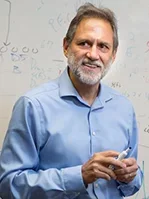What Is Memory?
Memories Are At The Core Of Who We Are
Research to Improve our Understanding of Memories
They are intrinsically linked to our identity and their loss through disease is among the most devastating brain disorders. UCLA neuroscientists are exploring how memories are made, where they are stored in the brain and how they are retrieved. Research on learning and memory has entered a sophisticated new era, and many of the notions we had about memory are being overturned. UCLA researchers are helping pioneer new paradigms that will not only change how we view memory, but may improve the lives of people with memory-related disorders.
Dr. Michael Fanselow, a professor of behavioral neuroscience, has proposed a theory of memory that differs from the traditional view that memories are formed in the brain like a video recorder capturing an event. In the traditional scenario, an experience is hard-wired in the brain, and when we want to remember it we simply replay the memory from that specific part of the brain. Sometimes the process works well. Other times the equipment malfunctions; the memory only sputters in our mind's eye or is gone. Dr. Fanselow says, the process of laying down and retrieving memories is dynamic and malleable. Memories are made by changes in collections of neurons and the connections or synapses between them. A memory may be laid down in one group of neural circuits, but recalled in another. Each time we recall a memory it may change depending on the neural circuits that are engaged at that particular moment. That is, we don't remember it in the exact same way each time.
Moreover, making and recalling memories is a process that is easily skewed. To better understand why, Dr. Fanselow is focusing on a particular kind of memory linked to fear and areas of the brain, the amygdala and hippocampus, that play key roles in processing emotions and in learning and memory.
In his lab, he has mapped brain circuits where fear memories are stored and is examining which cells and molecules are changing during the formation of that fear memory.
"What we can do now is look at the brain and see where and what particular neurons are involved," Dr. Fanselow says. "We can see how an adaptive fear memory differs from a maladaptive one. From that, we can think about how we treat fear memories. Maybe the neurons that are expressing certain genes can be identified and maybe we can come up with drug treatments that work on those particular neurons."
Long-Term Memory And The Synapse
Other research is also aimed at explaining the dynamic nature of memory. In her lab, Dr. Kelsey Martin is studying how neural circuits undergo extensive sculpting and re-wiring in response to a variety of experiences. In the human brain, each neuron forms connections or synapses with about 1,000 other neurons. Dr. Martin and her colleagues have used imaging technology to record a long-term memory as it was being formed. Their work suggests that memories are stored as changes in the strength and number of synapses. So understanding how synapses are made, changed and lost, may just hold the key to understanding human memory.

